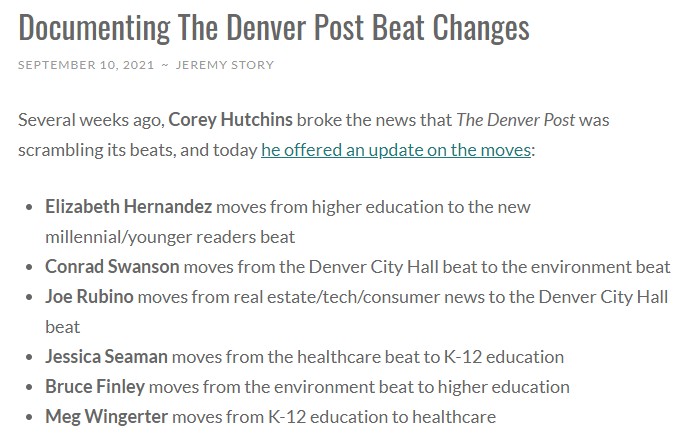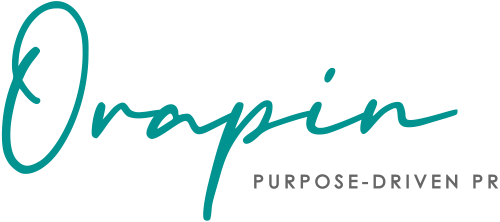
Whose hands are the right hands? We’re talking about the reporters, editors, and producers who will share your story and amplify your message. In order to connect with these people, you need to have an A+ list. Spending time to curate a targeted media list is always worth the effort and is a crucial step in getting results from your pitching efforts.
So where do you start? Do you Google names? Should you pay for a subscription to a media database? How do you find the right people for your media outreach?
Start by defining your audience
Next, put yourself in their shoes. Which publications are these individuals reading, which podcasts are they listening to, what types of media channels are they tuning into? How and where do these people get their news? Is it from traditional broadcast outlets or podcasts? Online news sites, trade publications, or from influencers on social media? All of the above? Once you’ve defined the outlets, you are ready to get to work building your media contact list.
Who is an appropriate media contact?
If you’ve ever looked on the masthead page of a magazine, you’ll see a long list of individuals who helped create the publication. You’ll find the editor-in-chief, publisher, section editors, writers and reporters, advertising and sales folks, photographers, and art directors. For a TV or radio station, you’ll find a similar list of folks including producers, reporters, anchors, production people, and videographers. The vast majority of these people do not want to hear from you. You need to reach out to a reporter, writer, editor, or producer who focuses on your area of expertise or your industry or whose focus, or “beat,” aligns with the type of news you’re sharing.
For print and online publications, there might be one person, or there may be a whole department of individuals who focus on your topic area. For example, if your nonprofit serves elementary-aged children and you are reaching out to your local newspaper or business journal, there is likely only one reporter whose beat includes K-12 education. If you provide mental health services and you are reaching out to a health and wellness publication, there might be a whole editorial department including a mental health editor, assistant editor, and perhaps even a few writers under them. When you have more than one choice, you need to do a bit more research. Start by following each of these editors and writers on their social media channels, particularly Twitter and LinkedIn. Read through several months of past articles from each contact. Determine what topics are of particular interest to each of these individuals to determine who is the best fit to cover your story.
When researching contacts for print or online publications, someone with the title of “reporter” or “writer” is a safe bet for pitching as they will conduct interviews and create their own stories. Someone with the title of “editor” may be in charge of editorial direction for the department and, as a result, may or may not actually do any writing or reporting themselves. Each publication works differently and sometimes pitching the editor will yield results, sometimes it won’t.
The same approach applies to TV and radio broadcasts. Someone with the title of “producer” will assign stories to individual reporters, but they may also be in charge of setting up interviews for specific segments of the broadcast. As with print and online, reporters will either work on assignments that have been passed along to them, or they will seek out their own stories.
When creating your media list, include all potential contacts – writers, reporters, editors, and producers. Be aware of their roles within their publications and be cognisant of tailoring pitches based on these roles.
Anatomy of a spreadsheet
Once you have your contacts and publications identified you’ll want to start plugging information into a spreadsheet. Media lists will typically include the outlet, perhaps a brief description of the outlet’s focus, and corresponding information for each media contact at that outlet. Beyond their name, email, and phone number, it is often helpful to include notes on the following:
- A reporter’s area of focus and links to past articles/work they have published
- Their Twitter handle and other social media profile page links/handles
- Notes on your pitching efforts such as what pitch you sent out on what date
- Notes on their response to your pitch (HINT: if this column fills up with a lot of “not interested” responses, it’s time to find someone else!)
- Links to any articles that were published as a result of your pitching
How do you get in touch once you’ve found the right person?
Determining a reporter’s contact information can often be the trickiest part of creating a media list. Many publications will provide email addresses and phone numbers via their online masthead. Some will simply share a Twitter handle for the reporter. The vast majority of media outlets will provide at least one way to get in touch with their reporters. If you can’t find an email address, reach out via Twitter, check their LinkedIn page, or call the publication directly.
Should you pay for a subscription to a media database?
Media databases, such as Meltwater or Cision, tend to be quite expensive and usually aren’t worth the cost. If your company is sending out frequent press releases nationally and internationally to hundreds or thousands of reporters, then yes, these databases are probably a necessary tool. But for organizations with a smaller focus which includes their local audience and industry-focused publications and writers, then the subscription services usually aren’t necessary. As PR professionals, we often have to double-check that the contacts provided by these services are actually current, so they really don’t end up saving too much time in the end to make the cost of the subscription worth the investment.
Update your list regularly!
Creating a media list isn’t a one-time endeavor, prepare to revisit and revise your list regularly! Just last week The Denver Post shared that they would be “scrambling” the beats for several of their long-time reporters. As the Denver PR Blog reported, there was quite a bit of shuffling in the newsroom:

This real-life example highlights the importance of double-checking your media list each and every time you are ready to start pitching. Reporters change publications and beats ALL.THE.TIME. Some disappear off the face of the planet, presumably to pursue another career, and new faces arrive to take their place. In addition to death and taxes, the third guarantee in life is the fact that you will need to update your media list on a very regular basis. In addition, you should always be on the lookout for new media outlets. New websites, podcasts, and influencers are always cropping up, so stay on the lookout for new pitching opportunities!
Your future pitching success will only be as great as your media list. Taking time to fully research outlets and contacts guarantees better results as you’ll be able to focus your time and effort talking to the people that are best equipped to help you tell your story. So start reading, digging through mastheads, and finding the right people for your list. You already know you have a good story to tell, now you just need someone to write about it!
Photo by Anna Shvets from Pexels

Diana Crawford is a seasoned public relations consultant with more than 15 years of agency, consulting, and in-house experience. She joined Orapin in 2013 and manages account services and client communications strategy development. She has worked across a variety of industries and has expertise with professional services, food/alcohol, health and wellness, lifestyle, sports, education, tech, and non-profit organizations.
